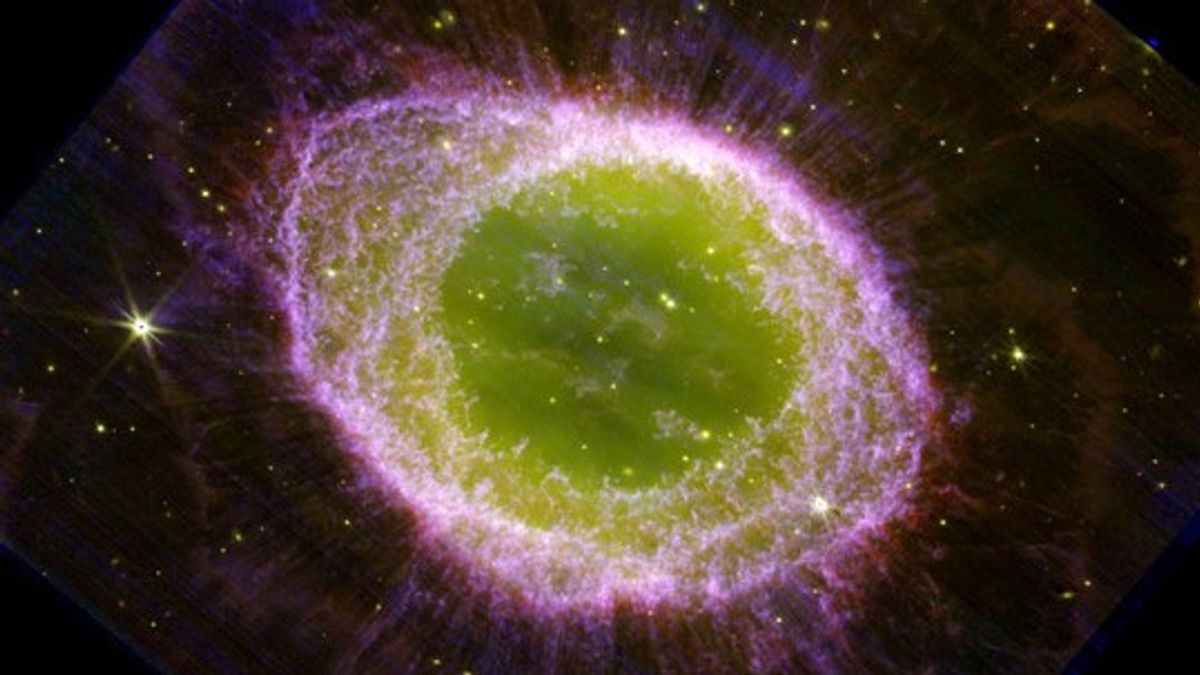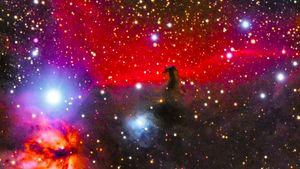
JAKARTA - The James Webb Space Telescope has succeeded in uncovering the characteristics of a glowing gas structure like a donut known as the Ring Nebula.
The Ring Nebula or the Planet Nebula which is also called Messier 57 is home to the colorful remnants of dying stars who have thrown away most of their mass at the end of their lives.
The planetary nebula, which, although its name has nothing to do with planets, usually has a round structure and is named after it because it originally resembled the disk where the planet formed when French astronomer Charles Messier discovered the first in 1764.
Amateur astronomers often see the nebula throughout the summer and are located in the constellation Lyra only using telescopes.
Its different structure from other stars, as well as bright colors, has long captivated human imagination, coupled with stunning new images taken by the Webb Telescope.
With images from the telescope, it offers scientists the opportunity to study and understand the complicated process that forms this cosmic masterpiece.
"The Webb telescope has given us an extraordinary view of the Ring Nebula that we have never seen before. High resolution images not only display complicated details of the expanding shell of the nebula, but also reveal the interior of the surrounding central white dwarf very clearly," said Webb Telescope Ring Nebula Project lead scientist Mike
관련 항목:
menambahkan, dari hasil gambar Teleskop Webb ini mereka dapat menyaksikan babak terakhir kehidupan sebuah bintang, bisa dikatakan seperti previsi masa depan Matahari yang jauh.
"We have opened a new window for the observation of the Webb Telescope to understand this amazing cosmic event. We can use the Ring Nebula as our laboratory to study how planetary nebulae are formed and evolved," said cap.
According tochair, the stunning feature of the Ring Nebula is proof of the star's life cycle. He is about 2,600 light-years away from Earth, a nebula born from a dying star that takes its outer layers into space.
"What makes this nebula really amazing is the diversity of its shapes and patterns, which often include a smooth ring of luminous, an expanding bubble, or a complicated thin cloud," explainsTEN.
menjelaskan, pola-pola ini adalah konsekuensi dari interaksi kompleksi berbagai proses fisik yang belum ditangami dengan baik. Cahaya dari bintang pusat yang terhot sekarang melancahayakan lapisan-layanan tersebut.
Just like fireworks, various chemical elements in the nebula emit light with a certain color, which then produces very beautiful and colorful objects.
Based on these data, astronomers can study the chemical evolution of these objects in detail, as quoted from the websites of Manchester and CNN International, Monday, August 7.
"These images have more than just an aesthetic appeal; they provide a lot of scientific insight into the stellar evolution process," said accompanying leader scientist Cox.
"By studying the Ring Nebula with the Webb Telescope, we hope to gain a deeper understanding of the stellar lifecycle and the elements it releases into the cosmos," he continued.
The English, Chinese, Japanese, Arabic, and French versions are automatically generated by the AI. So there may still be inaccuracies in translating, please always see Indonesian as our main language. (system supported by DigitalSiber.id)





















